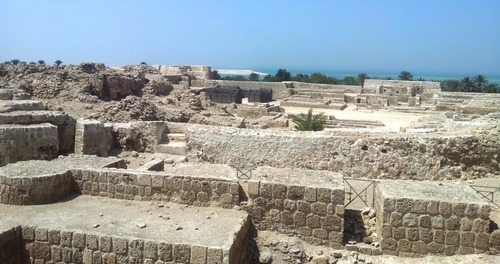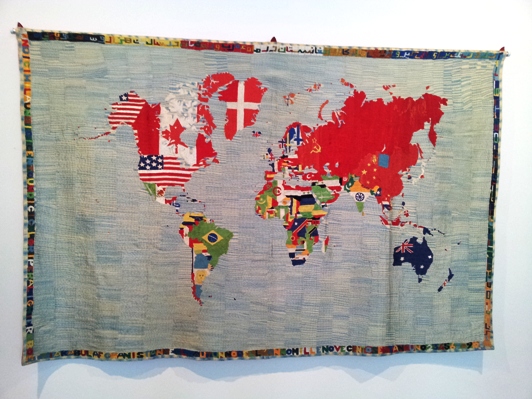
Alfredo Jaar’s iconic installation of the Giardini rising from the bottom of a pool only to disappear again quickly under the waves. Photo & composition by RK
Although I came to Venice to test and explore an artist’s project that fundamentally critiques the system of national representation at the Biennale, I must admit I enjoyed the national pavilions much more than the group show “The Encyclopedic Palace” and some of the collateral events.
Artists and curators asked to represent their country invariably grapple with the question how to ‘represent the nation’ and why they should be the ones called to do it. This intellectual quandary produces some interesting artistic results. Besides, this system does allow for a plurality of approaches to be present in the same event, notably empowering voices from the periphery.
I had my hands full with checking the national pavilions around town and relating what I saw to Jonas Staal’s Ideological Guide to the Venice Biennale. This guide, an app for android and apple-ware, describes each pavilion in detail, providing statistical data for the country, its conflicts and alliances, with a cover piece by an art professional well acquainted with that country, usually a ‘national’ (sic).
It has a navigation system, and although I usually spurn such devices, preferring to rely on my sense of orientation, knowledge of the city map and passers-by, I did use this one. Venice is a labyrinth. The precise GPS pinpointing is more useful than the Biennale’s map. So I managed to see quite a lot in two days, while maintaining the time for long exchanges with the artists and an occasional curator.
What follows are reflections about the national pavilions, interspersed with comments about the Biennale in general and personal perspectives on artists and shows that were not part of the national representation mechanism.
I will be adding the chapters on the national representations as I finish writing them.
China
Azerbaijan
Central Asian Pavilion
Slovenia
Bahamas
All the Middle Eastern national presentations









